First Solar looks to cloud as future data platform
The roomful of industrial automation professionals appeared stunned to silence at the conclusion of a presentation by Allen Blackmore, architect, enterprise data, First Solar, at the Rockwell Automation TechED conference this week in Orlando. It wasn’t because of what he said First Solar was in the midst of doing, but how they are doing it. And it’s just a logical trajectory for information technology (IT) and operational technology (OT) convergence—when viewed from above.
Blackmore defines IT as, “The use of computing infrastructure and services to manage electronic data.” OT is, “The monitoring and control of physical devices/processes in an industrial setting.”
“I’m from IT, where we deal with servers, applications and end users complaining about their applications not being up,” Blackmore said. “You are in OT, where you have to keep the plant running to make products safely. The convergence of OT and IT is an opportunity to modernize.”
[sidebar id =1]
At First Solar, “A bar code is read every 15 seconds as a solar panel goes down the line,” Blackmore said. Some 15,000 transactions run every 10 to 30 seconds per manufacturing unit, with a total of 400,000 tags. Data is collected from PLCs via RSLinx and put it in a FactoryTalk Transaction Manager (FTTM) database. “A custom .NET process retrieves data from the FTTM database and places it into our production database,” Blackmore said. From there, it’s batch-loaded to an SQL reporting database and made available to global services. “Data goes through multiple handoffs before arriving at its final destination,” he said.
First Solar’s objectives are to simplify the data collection process, and to increase scale and reduce costs using secure cloud infrastructure.
To that end, the company is moving to a standardized Rockwell Automation control infrastructure with the FactoryTalk Cloud framework. The change is eliminating back-up servers and is expected to cut IT costs by millions of dollars while improving insight to minimize downtime.
The cloud platform bypasses FTTM, ingesting data directly from robots, machines, PLCs and other connected devices. It can broker the data and deliver it to applications for analysis and storage, then make it available to, for example, Azure IoT Event Hub, Kafka, and relational database management and file systems.
“The cloud platform may already be embedded in your Rockwell Automation solutions,” Blackmore said.
The cloud decision
Connecting automation to the cloud raises concerns in the IT as well as OT worlds. “The cloud – is it just a buzzword? My first experience was not so good,” Blackmore said. “It’s been better the second time around.”
The cloud enables a “pay-as-you-grow” model, eliminating capital spend and depreciation expense. It simplifies infrastructure, eliminates manual server builds, takes over time-consuming backup tasks, and “allows your resources to focus on higher value undertakings,” Blackmore said, with less focus on customization and more on configuration, less on upgrades/patches and more on execution.
The cloud can save users millions of dollars while enabling powerful analytics. “ROI is coming from cloud-based services,” Blackmore said. “It’s pay as you go, not capital-based. And it simplifies infrastructure – from the perspective of an IT guy, getting an on-premises server takes a while, and more than a day is too long.”
At the same time, the cloud is “much more a la carte. You may have to use five or six or seven different cloud services to get the equivalent of one on-premises package,” Blackmore said, “but my budget can’t handle 10,000 new servers to support analytics. The cloud can.
“You’ll see enterprise, maintenance, supply chain…everything in the cloud. It’s our future data platform.”
What about security?
“Every device we collect from is an Internet of Things (IoT) device, whether it’s a machine on the floor, a customer, or a solar panel,” Blackmore said. “We want to push the data as fast as we can instead of scheduling batch loads, to get real-time visibility with real-time results.”
Cloud data is then streamed into its final destination, and inspected in-flight for deviations or exceptions. If cloud connectivity is interrupted, the sender buffers.
“The cloud takes security seriously. It uses encryption, with a 40-plus character key, and Active Directory authentication as well as IP address filtering,” Blackmore said. A secondary key can be rotated in if the primary needs to be regenerated, data is encrypted at rest, and connectivity is initiated from on-premise. “Is that enough? You decide,” Blackmore said. “In the long run, each of us have a different risk profile.”
What about cost?
There is, of course, a cost associated with scaling services. At First Solar, Cloud service costs about 20% more than its current blend of on-premise plus cloud services. Other levels of cloud service, such as Microsoft Azure Data Lake Store, geo-redundant storage (GRS) hot, and GRS cold cost from 64% to 84% less than the current blend.
“Look at the value proposition of services that are not available on-premises, and ones that are,” Blackmore said. “Cloud is not always cheaper.”
At this point in time, First Solar has successfully streamed more than 100 million messages in the past month to their IoT Hub using .NET code. “We’ve demonstrated clear performance improvements that come with cloud scaling,” Blackmore said. The company has partnered with Rockwell Automation. They’ve held an on-site training session, and have maintained their cloud spend “well below budget by actively managing services.
“Our vision is one of simplicity. The FactoryTalk Cloud enables a converged landscape, promotes flexibility via extensibility, enables business logic closer to the manufacturing systems, and permits direct-to-cloud transfer.”
Download the full report: Highlights from Rockwell Automation 2017
About the Author
Paul Studebaker
Paul Studebaker

Leaders relevant to this article:

